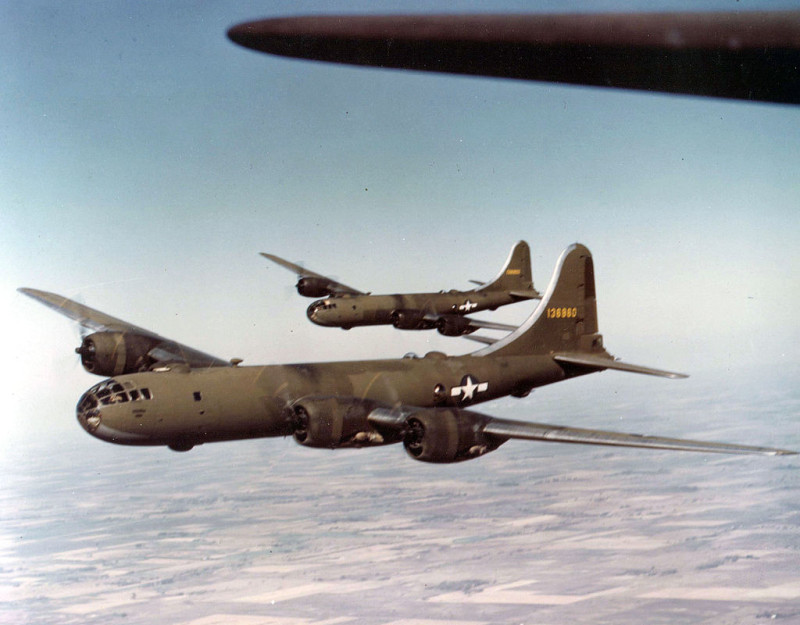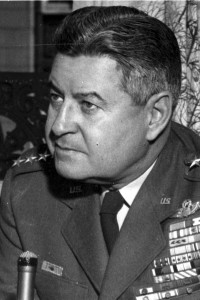The US Firebombing of Wuhan, Part 1
- By Guest blogger
- 12 September, 2015
- 8 Comments
 It may have cost 40,000 lives, but the US firebombing of the central Chinese city of Wuhan in December 1944 is one of the least known chapters of World War 2. Here is a rare account of this tragic event, by Stephen R. MacKinnon, history professor at Arizona State University and author of the book Wuhan 1938. The account is part of a paper which Dr. MacKinnon delivered in early September at an international conference in Chongqing on the 70th anniversary of the end of WW2 in Asia, and it is brought here with his kind permission. This is the first of a two-part series.
It may have cost 40,000 lives, but the US firebombing of the central Chinese city of Wuhan in December 1944 is one of the least known chapters of World War 2. Here is a rare account of this tragic event, by Stephen R. MacKinnon, history professor at Arizona State University and author of the book Wuhan 1938. The account is part of a paper which Dr. MacKinnon delivered in early September at an international conference in Chongqing on the 70th anniversary of the end of WW2 in Asia, and it is brought here with his kind permission. This is the first of a two-part series.
On December 18, 1944, the Chinese leadership in Chongqing, namely Chiang Kai-shek, Chen Cheng and He Yingqin, connected the China war with the European theater by approving the tactic of strategic firebombing of the major occupied city of Wuhan. The vehicle was the giant new American B-29 Flying Super Fortress bombers that were brought to Chengdu expressly for the purpose of firebombing Wuhan. The commander of the bombing raid of 92 planes was none other than the youngest two-star general in the US Army Air Force at the time, General Curtis LeMay. A few months later LeMay would become famous for directing the firebombing of Tokyo and a hundred other Japanese cities.
The firebombing of Wuhan drew little attention internationally and was censored in the Chinese press. Yet the physical destruction and loss of life was very heavy. (Chiang Kai-shek in his diary admitted to 40,000.) Hankou (1) was said to have burned for three days.
(…) LeMay was transferred (from Europe) to Asia in the fall of 1944 with a mandate to develop strategic bombing plans for Chinese and Japanese cities (…) Frustrated at first by the ineffectiveness of high-altitude bombing of Japan from China, LeMay began to explore the alternative of low-altitude incendiary or fire bombing (introduced first in the European theater by the British and famously applied at the end of the European war in the destruction of Dresden on February 13, 1945). LeMay planned to use M-69 incendiary bombs, an extremely deadly cocktail of phosphorous and napalm just developed for the purpose by scientists at Harvard University.
The Japanese had been using airbases and railway lines of Wuhan in central China since its capture in October 1938, to wage war and bomb targets in central and southwestern China. Wuhan had been an especially important launching pad for the last big Japanese offensive, beginning in the spring of 1944, known to historians as the Ichigo campaign. This campaign seemed in November-December, after the fall of Guilin, to possibly threaten Chongqing.
Chinese official sources on the subject are understandably limited, but both Chiang Kai-shek’s and Wang Shijie’s diaries mention the bombing — as does the US Ambassador Hurley and others in dispatches. Clearly there was an agreement at the highest level of the Chinese government — on the military side namely Chen Cheng and He Yingqin with US commanders Wedemeyer (2) and Chennault (3). LeMay was given the green light by General Wedemeyer and Minister of War Chen Cheng to firebomb Wuhan in order to destroy its airbases, industrial capacity and railroad lines.
On December 18, ninety-four B-29 Fortress Super bombers took off from airfields outside Chengdu on an operation with the codename Matterhorn loaded with 500 tons of incendiary bombs. For LeMay, this was his first experience with firebombing on a grand scale. For the Chinese leadership in Chongqing, this was a strategic decision resembling earlier ones like the blowing of the dykes of the Yellow River or torching of Changsha and Guilin. A top advisor and Minister (of Propaganda) to Chiang Kai-shek at the time, Wang Shijie, who was a native of Wuhan, expressed regret in his diary; but he agreed that the bombing was necessary — regardless of cost to the city and its civilian population. Wuhan had to be sacrificed.
(To be continued)
1) One of the three major districts in Wuhan. Historically, Wuhan emerged as the conglomeration of three cities: Hankou, Wuchang and Hanyang.
2) Albert Wedemeyer, Chiang Kai-shek’s chief of staff and commander of US forces in China.
3) Claire Chennault, commander of 14th Air Force in China.




 Copyright © 2025
Copyright © 2025
There are reports of medical supplies of entire Japanese divisions being wiped out by the Wuhan bombing.
Hello, dear website holder, can I have more information about Dr. MacKinnon’s paper? Such as the journal or doi number? I need to cite it. thanks so much.
It makes me speechless.
War will not bring happiness, silence for Wuhan residents
That’s exactly why the communists managed to take over. No matter how many Chinese people the west says the communists had killed, they just can’t beat Chiang. Chiang should’ve been put on the same court alongside Tojo and tried and hanged.
Yes, War is Hell.
Because it was so well concealed that I went to Chiang Kai-shek’s diary with some curiosity (I’m a native Chinese speaker), but I changed a few keywords, whether it was 40,000, Wuhan, super fortress, or the diary of the whole year in 1944 – I didn’t see any clues about the atrocities of the US military.
Japan directly killed 13 million Chinese people during the war. Mostly from the sky over civilian populations with their own incendiary bombs. Americans didn’t start the violence, they ended it.